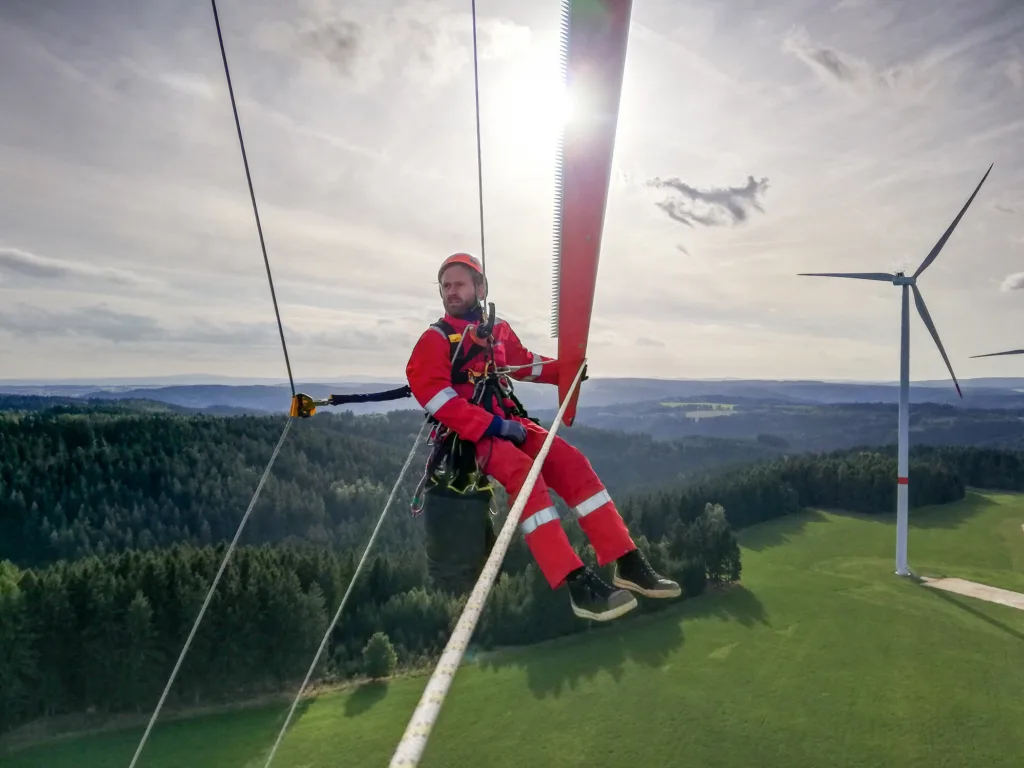Falls, whether at the same level or at height, are one of the main causes of accidents in the industry. Know what measures to take to prevent them and what technology is available to reduce their incidence.
According to an article by the World Health Organization, falls are the second leading cause of unintentional injury deaths in the world, behind traffic accidents. A fall is considered an unintentional event that causes the body to lose its balance and hit the ground or other firm surface that stops it. They can cause fatal injuries.
Types of falls.
There are two types of falls, falls at the same level or falls due to work at height. Both occur under different circumstances and for different reasons. Falls at the same level occur in all types of sectors and industries, and are usually caused by slipping, tripping, loss of balance, etc. In most cases they are caused by some external condition: wet floor, cleaning products or oil, a hole or unevenness in the floor, among others.
Falls from heights, on the other hand, are classified as “falls from a different level”. According to Decree 911/96 Art. 54. of the World Labor Organization, work with risk of falling to a different level includes those tasks that involve moving or working at a level whose difference is equal to or greater than two meters with respect to the nearest horizontal plane below.
Work at height is also considered to be any type of work carried out below zero level, such as: wells, entering underground tanks, excavations deeper than 1.5 meters, and similar situations. They are usually frequent in sectors such as construction, mechanics, mining, energy and cleaning services.

Most common causes and risk factors.
Just as wet or uneven floors are often the cause of falls at the same level, falls at height usually involve some of the following risk factors:
- Short-term or sporadic work, in which the risk is underestimated and adequate precautions and measures are not taken.
- Absence of collective protections or incorrect use of them.
- Inadequate characteristics of equipment, surfaces and work habits.
In addition, there are certain factors that increase the level of risk, and that combined with those mentioned above can endanger their lives. Some of these are:
- The height of the work: More height means greater risk for the worker.
- Use of ladders: Whether fixed or hand ladders, the fact of including steps, which are irregular surfaces, constitutes a risk factor.
- Damage to the platform: These can be openings, holes or unevenness.
- Ascent of large or heavy materials: Large pipes, chains, etc. Any element that is external and can fall, cause an unevenness or imbalance in the force, etc.
- Working on inclined or unstable surfaces: Some roofs, scaffolding or platforms may have these characteristics, or even irregularities.
At the same time, mistakes can be made that put the worker at height at risk, such as not checking the safety systems and personal protection elements before using them. In the face of routine, habituation or fast work, there are several human errors that can occur.
Most accidents involving falls in work at heights can be avoided and there are basic preventive measures to protect the worker while performing his work.
Active and passive fall protection.
Active protection measures are those that directly involve the worker. They include elements that support the person performing the function. Some of them are harnesses, connection elements and structural anchorage points.
Passive protection, on the other hand, is designed to act in the event of a fall, stopping the worker on the way and avoiding impact against structures or elements. In general, they do not require the intervention of the worker, who is usually unable to act. Passive protection measures include: guardrails, safety nets, covers, scaffolding, mobile platforms, among others.
In the case of falls on the same level, it is essential to take care of immediate cleaning and signaling, since it is usually liquids on the floor or broken or uneven surfaces that cause falls. A well-conducted and communicated protocol, with clear guidelines for action and their correct compliance, should be able to prevent this type of accident.

Traditional and digital PPEs and their preventive function.
PPE (personal protective equipment) are all those elements designed to protect the worker in the workplace. In the case of work at heights, they are designed to hold the worker. They are the last barrier between the person and the risk, since they do not eliminate risks, but seek to minimize their consequences.
Some of the traditional PPE involves protective gloves, goggles, helmets, non-slip shoes, harnesses, carabiners and protection lines. They are part of what we consider active protection.
On the other hand, we have digital PPE, i.e., personal protection elements that involve technology, and allow immediate detection of a sudden change in the worker’s height. The detection and immediate alert to leaders, supervisors or medical services allows a quick response, mitigating the consequences of the accident.
Digital PPE, such as the Drixit Tag together with the Drixit platform, allow not only fall detection, but also provide safety supervisors with real-time information: which workers are working at height, in which sectors and historical data on that type of operation and work. Finally, they allow automated monitoring of the status of the certificates required to work at heights. Thus, they efficiently ensure that all those who perform this work are properly instructed and certified, preventing accidents.

